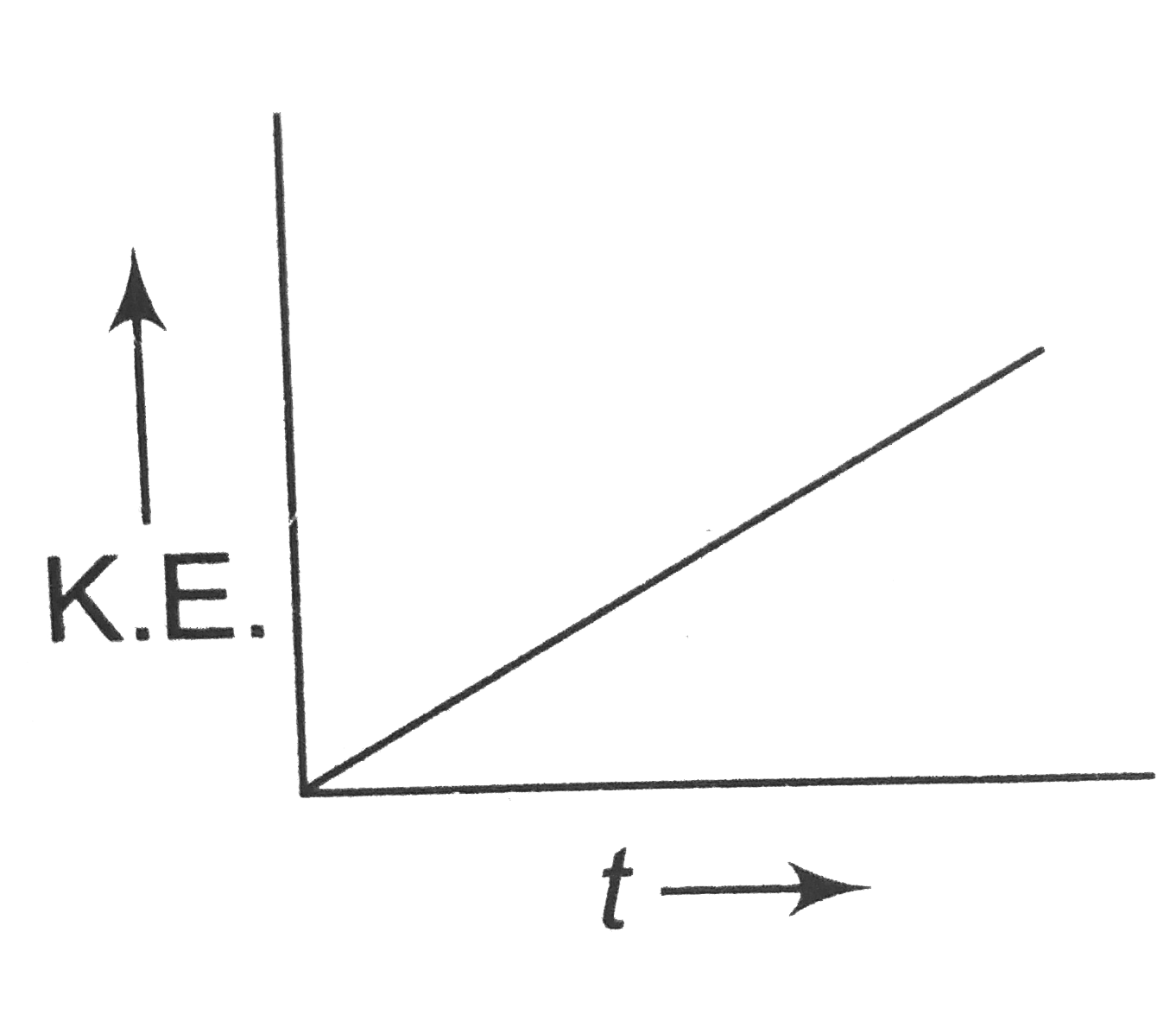If a body has kinetic energy. T, moving on a rough horizontal surface stops at distance y. The frictional force exerted on the body is
T√y
√Ty
yT
Ty
The correct Answer is:D
To solve the problem, we need to determine the frictional force exerted on a body that has kinetic energy T and comes to a stop after traveling a distance y on a rough horizontal surface.
1. Understanding Kinetic Energy:
The kinetic energy T of a body in motion is given by the formula:
T=12mu2
where m is the mass of the body and u is its initial velocity.
2. Using the Equation of Motion:
When the body comes to a stop after traveling a distance y, we can use the equation of motion:
v2=u2+2as
Here, v is the final velocity (which is 0 when the body stops), u is the initial velocity, a is the acceleration (retardation in this case), and s is the distance traveled (which is y).
3. Setting Up the Equation:
Since the final velocity v=0, we can rearrange the equation:
0=u2+2(−a)y
This simplifies to:
u2=2ay
4. Relating Kinetic Energy and Frictional Force:
From the kinetic energy equation, we can express u2 in terms of T:
u2=2Tm
Now, we can substitute this expression for u2 into our previous equation:
2Tm=2ay
5. Solving for Acceleration a:
Dividing both sides by 2:
Tm=ay
Rearranging gives us:
a=Tmy
6. Finding the Frictional Force:
The frictional force F can be expressed using Newton's second law:
F=ma
Substituting the expression for a:
F=m(Tmy)
Simplifying this, we find:
F=Ty
Final Answer:
The frictional force exerted on the body is:
F=Ty
The kinetic energy T of a body in motion is given by the formula:
T=12mu2
where m is the mass of the body and u is its initial velocity.
When the body comes to a stop after traveling a distance y, we can use the equation of motion:
v2=u2+2as
Here, v is the final velocity (which is 0 when the body stops), u is the initial velocity, a is the acceleration (retardation in this case), and s is the distance traveled (which is y).
Since the final velocity v=0, we can rearrange the equation:
0=u2+2(−a)y
This simplifies to:
u2=2ay
From the kinetic energy equation, we can express u2 in terms of T:
u2=2Tm
Now, we can substitute this expression for u2 into our previous equation:
2Tm=2ay
Dividing both sides by 2:
Tm=ay
Rearranging gives us:
a=Tmy
The frictional force F can be expressed using Newton's second law:
F=ma
Substituting the expression for a:
F=m(Tmy)
Simplifying this, we find:
F=Ty
The frictional force exerted on the body is:
F=Ty
Similar Questions
When a body is rolling without slipping on a rough horizontal surface, the work done by friction is :
View SolutionA horizontal force just sufficient to move a body of mass 4kg lying on a rought horizontal surface is applied on it .The coefficient of static and kinetic friction the body and the surface are 0.8and0.6 respectively If the force contines to act even after the block has started moving the acceleration of the block in ms−2 is (g=10ms−2)
View SolutionA block of mass m is moving on a rough horizontal surface. μ is the coefficient of kinetic friction between the block and the surface. What is the net force exerted by the surface on the block?
View SolutionAsseration : A block of mass m starts moving on a rough horizontal surface with a velocity v. It stops due to friction between the block and the surface after moving through a ceratin distance. The surface is now tilted to an angle of 30∘ with the horizontal and same block is made to go up on the surface with the same initial velocity v. The decrease in the mechanical energy in the second situation is small than the first situation.
Reason : The coefficient of friction between the block and the surface decreases with the increase in the angle of inclination.
View SolutionA horizontal force applied on a body on a rough horizontal surface produces an acceleration 'a'. If coefficient of friction between the body & surface which is m is reduced to m/3, the accele-ration increases by 2 units. The value of m is
View SolutionA sphere is rolled on a rough horizontal surface. It gradually slows down and stops. The force of friction tries to
View SolutionA body of mass m is kept on a rough horizontal surface of friction coefficient μ . A force P is applied horizontally , but the body is not moving .Find the net force F exerted by the surface on the body .
View SolutionThe kinetic energy of a body moving along a straight line varies with time as shown in figure. The force acting on the body:

View SolutionA body of mass M is kept on a rough horizontal surface (friction coefficient =μ). A person is trying to pull the body by applying a horizontal force but the body is not moving. The force by the horizontal surface on the surface of the body is F, where
View Solution(A) : When external force acting on a body moving on a rough horizontal surface is doubled, the acceleration of the body is doubled.
(R ) : The acceleration of a body moving on a rough horizontal surface is proportional to the resultant force acting on it.
View Solution
